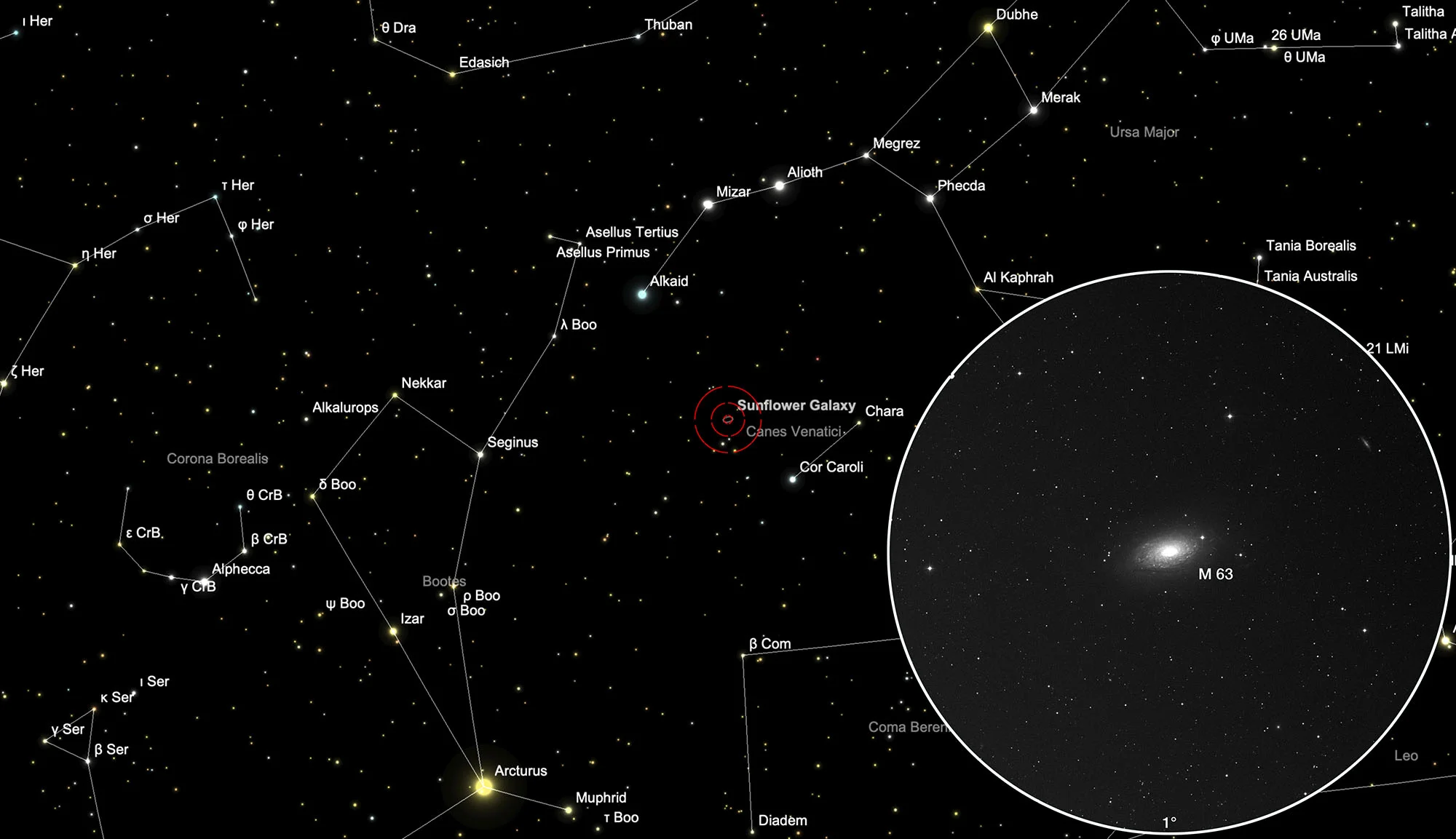Sunflower Galaxy (Messier 63)
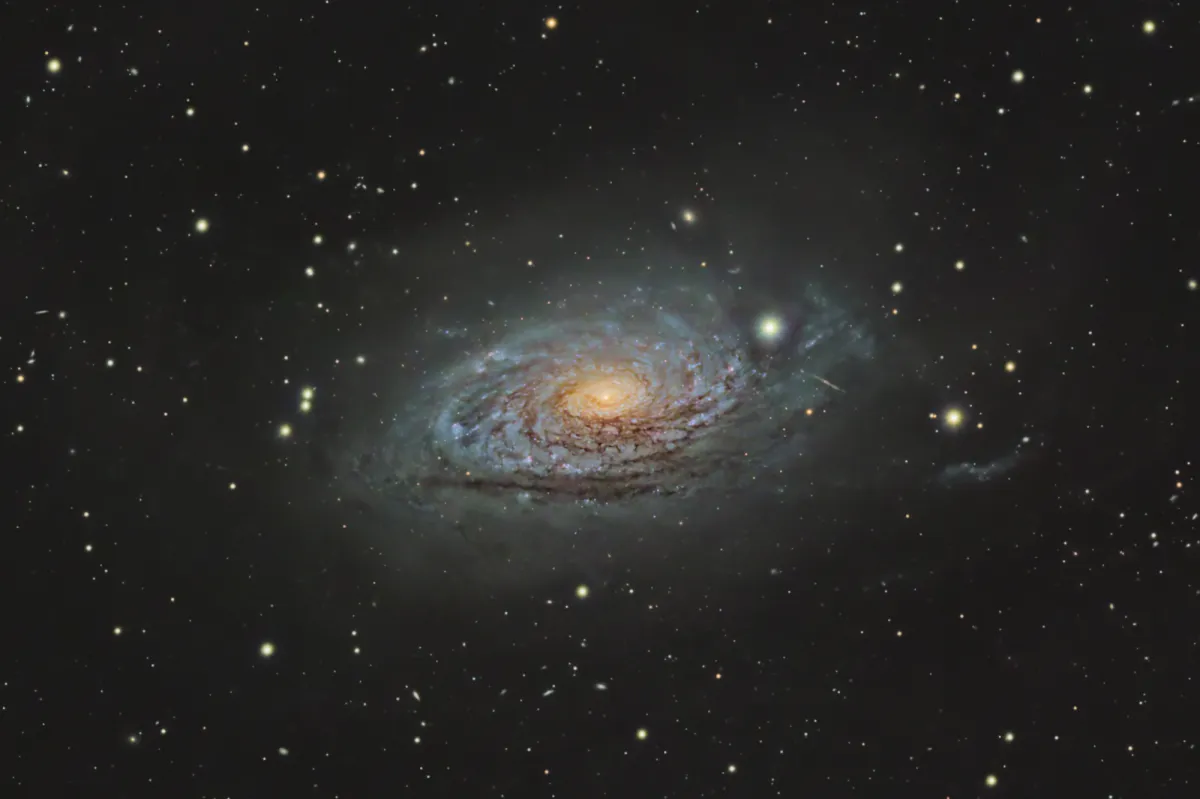
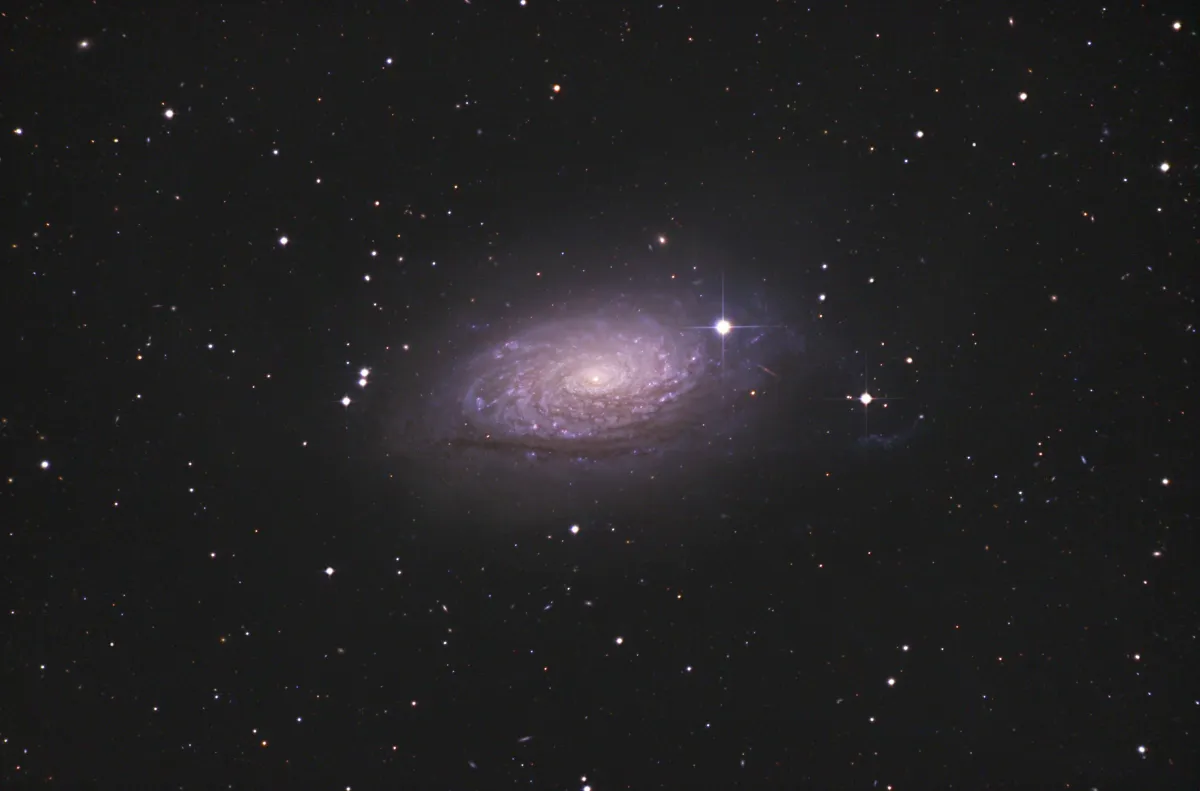
History
This bright galaxy in the constellation of Canes Venaticy was discovered by the French astronomer Pierre Méchain (1744-1804) on 14 June 1779. Méchain was a friend of Charles Messier and worked with him. In Messier's «Catalog Nébuleuses et des Amas D'Étoiles» published in 1784, Messier wrote: «Nebula discovered by M. Méchain in hunting dogs. M. Messier looked for it; it is faint, it has about the same light as the nebula indicated under the number M 59: it does not contain a star, and the slightest light illuminating the wires of the micrometer makes it disappear: there is one nearby 8th magnitude star, which precedes the nebula clockwise. M. Messier reported his position on the map with the route comets from 1779.» [281]
Physical Properties
M 63 is a Hubble-type Sbc spiral galaxy. The designation Sb refers to the inner area where the spiral arms are tightly wound around the core. Sc describes the outer, less tightly wound spiral arms. There are also countless bright H-II regions, i. e. extensive emission nebulae, which are comparable to the Great Orion Nebula in our galaxy. This flaky appearance makes the M 63 the prototype of the so-called flocculent spirals.
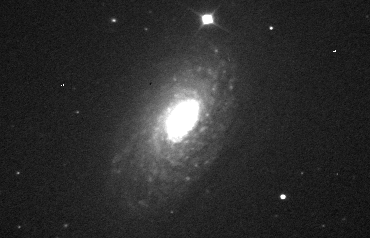
Infrared observations showed that M 63 essentially has a two-armed spiral structure. Spectroscopic studies indicated a density in the core region of the galaxy that is around 150 times higher than the average value. In addition, a stream of matter emanating from the core was discovered. The gas flows in a westerly direction and spreads in a cone shape. This indicates that the galaxy core is only slightly active.
In May 1971 a type Ia supernova broke out near the core (SN 1971I) and reached a maximum brightness of 12.1 mag. Type Ia supernovae arise in very close binary star systems with mass transfer, one component being a white dwarf. If so much matter has flowed onto the white dwarf that its upper mass limit (1.4 solar masses, Chandrasekhar limit) has been exceeded, it comes to a collapse and if there is enough mass to an explosion, which appears to us as a type Ia supernova. This type of supernovae has a known absolute brightness and is therefore one of the most important means of extragalactic distance determination. Nevertheless, the distance from M 63 is still fraught with a great uncertainty factor. The generally assumed distance is 7 Mpc (23 million light years), although values of 20-40 million light years are also found in the literature. [4, 97]
| Designation | NGC 5055 |
| Type | Gx (Sbc) |
| Right Ascension (J2000.0) | 13h 15m 49.0s |
| Declination (J2000.0) | +42° 01' 59" |
| Diameter | 12.6 × 7.2 arcmin |
| Photographic (blue) magnitude | 9.3 mag |
| Visual magnitude | 8.6 mag |
| Surface brightness | 13.3 mag·arcmin-2 |
| Position Angle | 105° |
| Redshift (z) | 0.001614 |
| Distance derived from z | 6.82 Mpc |
| Metric Distance | 8.330 Mpc |
| Dreyer Description | vB, L, pmE 120° ±, vsmbMBN |
| Identification, Remarks | h 1570; GC 3474; M 63; UGC 8334; MCG 7-27-54; CGCG 217-23; Sunflower galaxy |
How to find a Sunflower?
The galaxy M 63 is located in the constellation Canes Venatici. It lies on the line connecting the stars Cor Caroli (α CVn) and Benetnasch or Alkaid (η UMa), the end star of the drawbar of the Big Dipper. A good third of the way from Cor Caroli you will then encounter the cosmic sunflower with a wide-field eyepiece.
Visual Observation
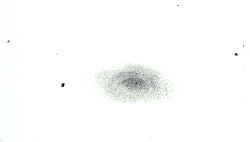
200 mm Aperture: The first thing you notice is the 'stellar' core of the galaxy. Even weak magnifications (68x) reveal two areas in the galaxy with different surface brightness. The lighter, inner area also has an oval shape and a spiral arm can be seen at its NNE edge. The brightness decreases almost abruptly towards the outer area. Even at 135x magnification, no structures were discernible there. A prominent star is located east of the galaxy. Even though you can't see too many details with a 200 mm telescope, the sunflower galaxy M 63 is an enjoyable sight! — 1997, Philipp Reza Heck
